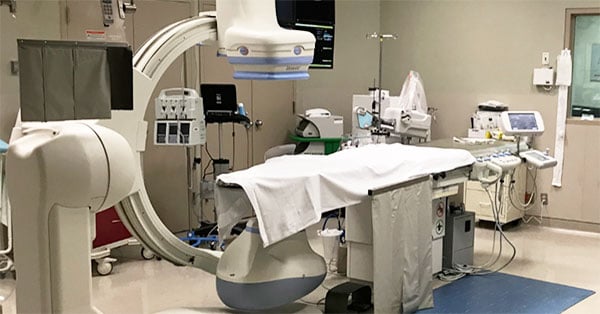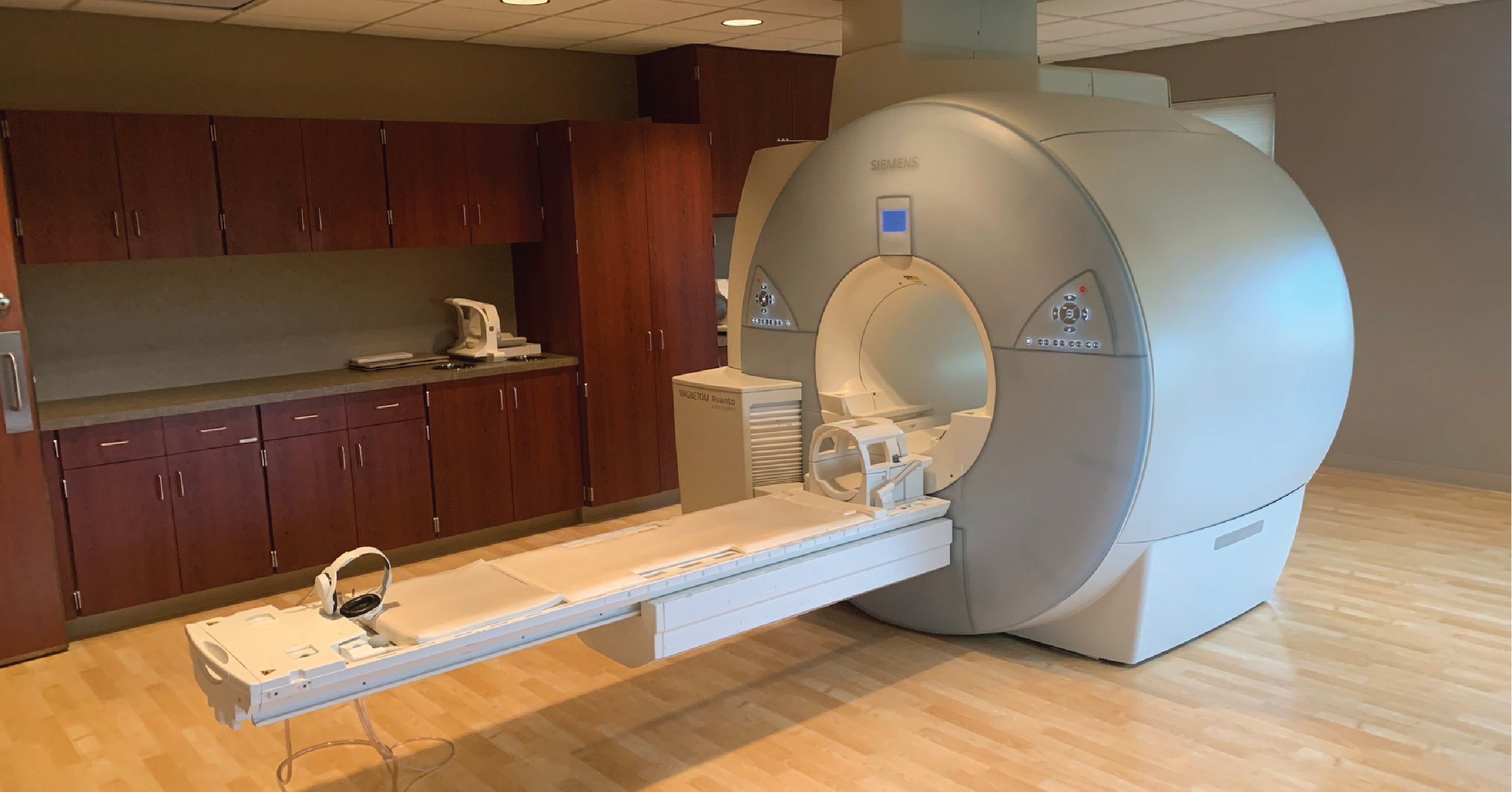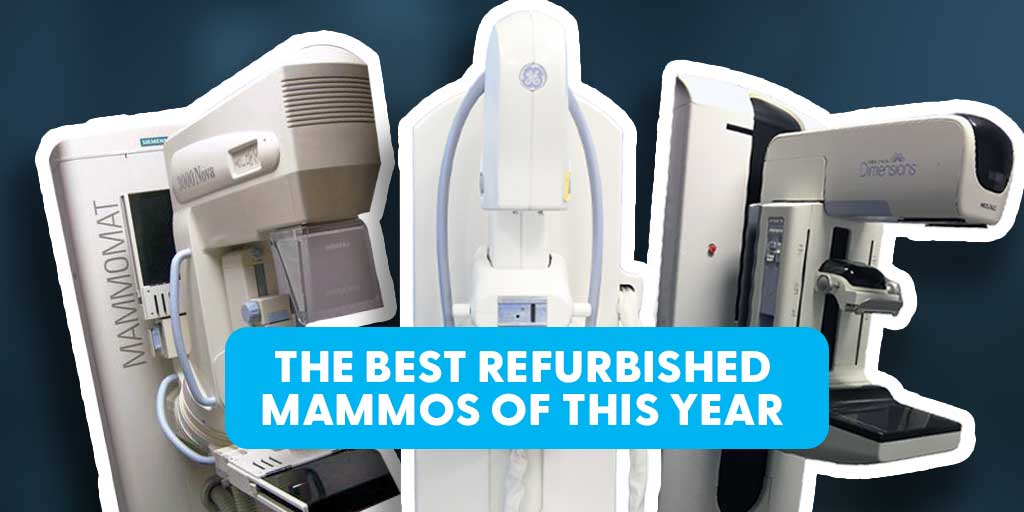
Updated: May 9, 2024 : 3 min read
What's the Difference Between a Cath Lab and an EP Lab?
One question we're asked on a regular basis about interventional radiology equipment is, "What's the difference between a cath lab and an electrophysiology (EP) lab?"
From a cursory look at how cath lab equipment is used, you wouldn’t notice a difference. Even though cardiac catheterization and electrophysiology labs use the same, small-detector radiology system hardware like a GE Innova 2100 IQ or Philips Allura FD10, for instance, the EP labs can show what's going on inside the heart in greater detail.
Still, there are significant differences between these two lab setups that require more than a brief glance to understand. We'll discuss these below.
Note: Block Imaging provides new and refurbished cath lab equipment, parts, and service in order to serve our customers. Reach out to our sales team to learn more about how we can help improve your diagnostic imaging.
- What Does a Cath Lab Do?
- What Does an EP Lab Do?
- Additional Cath Lab Equipment You May Need for EP Labs
- Cath Lab Designation
- Final Takeaway
What Does a Cath Lab Do?
Cardiac cath focuses on seeing and monitoring the anatomical structures of a patient's heart and major blood vessels– assessing blood flow, monitoring valve function, searching for blockages, etc. Many heart conditions can be diagnosed using cardiac cath.
What Does an EP Lab Do?
Instead of looking at anatomy and blood flow in and around the heart, EP focuses on examining and mapping the electrical system within the heart.
If a patient is suffering from cardiac arrhythmia, an EP study can be performed to determine the location of the electrical “misfire” within the heart. The misfire can then be fixed by implanting a pacemaker or defibrillator, or by using an ablation procedure.
Do Cath Labs Need More Space Than EP Labs?
Despite all the ancillary equipment that EP labs need, typical room dimensions between an EP lab and a cath lab don’t differ much. However, it’s difficult to recommend a typical room size.
When customers do ask about cath lab room sizes, our team at Block Imaging typically sends an OEM typical drawing as a starting point and then works with the customer to design a space that will work for their needs. We’ve had huge rooms, tighter rooms, and room sizes in between, but the bottom line is in making sure that your supplier can support in creating a custom plan. There are just a lot of factors that go into where doors, windows, and support posts need to be and so having a dedicated and experienced team to assist in this is the key to a good cath lab install experience.
Additional Cath Lab Equipment You Might Need for EP Labs
While both cath lab equipment types require ancillary equipment in the room to perform studies (injectors, hemodynamic monitoring, etc.), an EP lab requires a specific, additional subset of equipment. Items like a 3D mapping system, cardiac stimulator, RF generator, and combo lab can all be found in EP-oriented lab setups.
Because of all the added equipment, an EP lab often requires more carts, more counter space, and more monitors. EP labs may also require a more comprehensive cable management strategy to keep the room safe and navigable for the docs and techs moving around in it.
Cath Lab Designation
Because of the procedural and equipment differences, facilities that perform both cardiac cath and EP studies typically have a team of staff members that assists physicians with cardiac catheterization. From that team, they create a second, smaller team with additional training to assist in the EP specialty.
If you're in the market for a multi-use cath lab system, bear in mind that it may be necessary to plan for staff training on top of the new equipment.
Final Takeaway
Whether you intend to use your system for cardiac catheterization or electrophysiology, you can shop around for the same small detector cath lab unit for both.
On the other hand, because more ancillary equipment is needed to get an EP lab up and running, you can expect to spend quite a bit more on the front end of your investment.
Our team works with healthcare professionals every day to answer questions about which cath lab will best suit their needs.
Visit our Learning Center for more cath lab resources, or contact us today to start your Cath lab project.

Kenn Dextrom
Kenn Dextrom is the Director of Product Manager at Block Imaging. He aims to provide clear direction and careful planning for Interventional Cath Lab buyers and working with the Block Imaging product team to provide excellent solutions for our customers. Out of the office, he spends most of his time keeping up with his wife and their three energetic sons.





